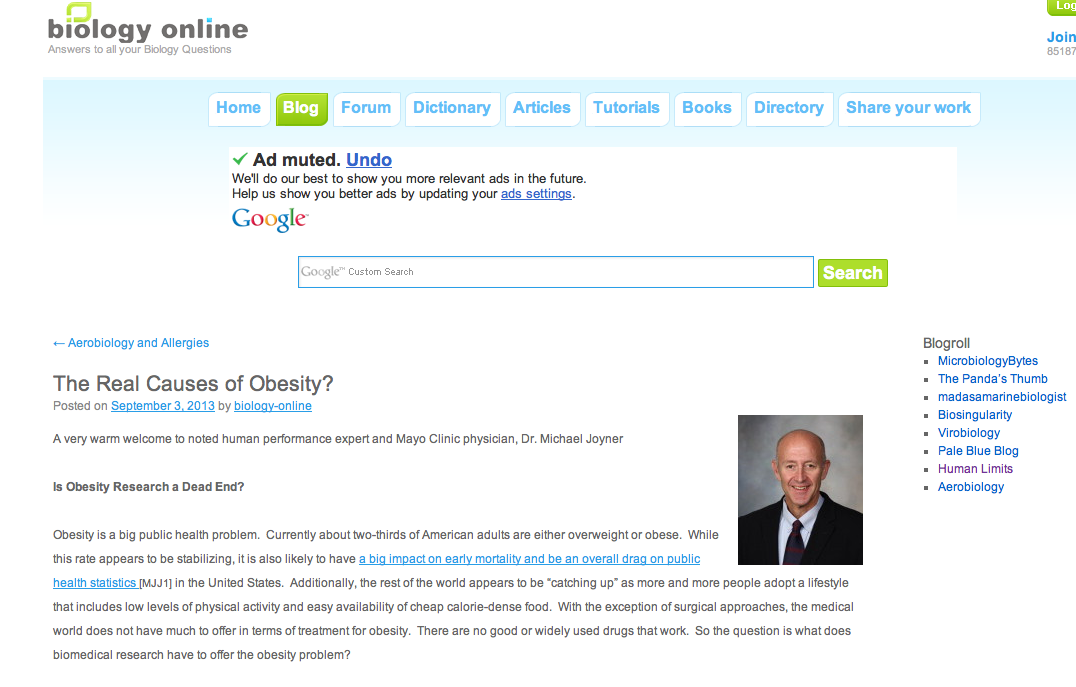Archive for the ‘Current Events’ Category
Whose Cubicle Is It?
The New York Times website was down last week forcing East Coast wannabes to find other sources of brain candy to start their days. One thing that popped up was a brief profile of serial innovator and serial disrupter Elon Musk who has taken on banking, electric cars, rocketry and a couple of other industries. Musk is interesting because he is not an expert at any one thing and perhaps his lack of deep expertise keeps him from being a prisoner of the conventional wisdom about most things.
Musk is also a controversial figure, but perhaps his example raises a few questions for us all about how we can avoid being prisoners of the conventional wisdom.
Here are a few:
- How many of us routinely get out of our comfort zone a try something new? In addition to being fun and challenging novelty helps us keep growing new brain cells and connections as we age.
- How often do you do things without your smartphone, GPS device, tablet, heart rate monitor or some other electronic gizmo? Many techie execs are sending their kids to electronic free schools. Is there something they know that the rest of us don’t? Does every human activity including working out require tracking?
- If your work world is a part of a passive Dilbert style cubicle culture are you simply giving in or doing something different? There is actually a lot of research on workplace culture and (no surprise here) those who work for supportive organizations and managers do better and it is possible to make your workplace more creative.
- When was the last time you gave a presentation without Power Point? A lot of discussion is taking place about how power point and the internet are shaping cognition. There is probably not a lot we can do about this except beware of the risk and get out of the box and avoid power point once in awhile. Old time track and field athletes and swimmers routinely complain that “the kids can’t do math in their head anymore” because they did not grow up calculating splits off an analog stop watch. Ask a younger person how many phone numbers they have memorized and the answer is who cares I have them on my speed dial. Will anyone be able to give or follow verbal directions to a restaurant in the age of GPS?
- Everyone is yapping about strength training and high intensity training. When was the last time you did pushups, sit-ups, burpees, or jumped rope? It is always interesting to look at basic military fitness standards and see how you compare. Talk is cheap, pushups are free.
- How many of us are afraid to ask questions about or provide input on things where we have little or no expertise? A lot of times experts become experts by mastering what is known and not what is unknown. They then work in an environment that reinforces their expertise and prevents them from seeking a broader perspective or wider solutions. It can be intimidating to challenge a self-assured expert, but in fields like medicine about 30-40% of the facts behind the expertise are proven wrong or at least subject to serious challenge and revision every 10 years or so. What would Elon Musk do in the face of that much uncertainly masquerading as truth or expertise?
Not everyone can start building electric cars or shooting rockets into space. However, most of us can spend a few minutes every day or perhaps a few hours every week doing something different and taking a few chances. We can also spend at least some time untethered to the electronic environment. Do this routinely and the odds are you will get smarter, healthier, enjoy your work more, and perhaps make a few discoveries along the way.
Five Questions About the Future
This post is going to wander a bit. But I want to share a few observations and questions about the future of the US that seem to me to be absent from a lot of the current political discussions and blame games.
- The US dominates the list of the top universities in the world. You can be skeptical about the rankings, how they are made and what this all means, but in almost any list you see the US is at the top. In the link above, 35 of the top 50 are from the US and 52 of the top 100 are from the US. Typically science and technology is what dominates the rankings and if you look at the top US institutions, they are also at the top of the NIH and NSF rankings in total research dollars. While a lot of esoteric stuff happens in research universities a lot it eventually ends up translated to things that have economic value and make a difference in people’s lives. Government funding for R&D is under threat and tuition is higher than ever. Are these good long term trends that bode well for future economic growth?
- The US was an early investor in universal education and shortly after the Civil War there was free primary education in every state and a very high rate of literacy. Early emphasis on literacy for religious reasons has also been credited for the economic success of both Protestants and also Jews. The idea is that an educated population creates the human capital needed for societies to thrive economically. Other things have to be in place as well, but you can only do so much with an uneducated population. We can bash the schools, we can bash the teachers, we can spend more money, we can spend less money, but does anyone have any idea about what policies actually work and how they might get implemented?
- One issue in the US and perhaps the rest of the developed world is that as a result of globalization and labor saving technology there is no such thing as a middle skill high wage job anymore. Some of what happened in the US in the 1950s when there were plenty of high wage jobs in manufacturing probably also reflected that fact that most of the rest of the world’s industrial capacity had been destroyed or degraded by World War II. So, some of what has happened is also about the rest of the world simply catching up. There are a lot of arguments about how unions or management blew it, and what policies could have been in place to change things. However, maybe the blame game misses the big picture. Isn’t the real question, what do we do next to make a new wave of middle class jobs accessible to more people?
- A lot of people are concerned about the rising income gap and gaps in economic opportunity. This concern is made worse perhaps by the loss of middle skill high wage jobs. To fix this aren’t we going to have to do more than simply change the tax code? The wars in Iraq and Afghanistan are projected to cost between 4-6 trillion dollars and what have we gained? Are we more or less secure than when they started? Could this money have been better spent on things like rebuilding roads and bridges in the U.S.?
- The US is lurching toward the next big set of budget show downs and the prospects for a collection of policies that stimulate growth in the short term and tame the deficit in the long term look unlikely. Every time I read about this nonsense I think about how Ronald Reagan and Tip O’Neill negotiated to restructure Social Security and the Tax Code. If Reagan, an icon to conservatives, could negotiate with a New Deal liberal like Tip O’Neill; why can’t the current crop of “leaders” find some common ground?
I am sure I could come up with 50 more questions that we might all ponder, but for some reason I keep coming back to these five. Who knows what the “right” answers are, but it seems to me you can’t get to the right answer if you don’t ask reasonable questions.
Sin Tax Update
One topic I’ve posted on several times relates to the use of taxes, insurance premiums and other “nanny state” approaches to shape behavioral health. The basic idea is most of what ails a given population is driven by behavior and that focusing on individual choice or medical care after people are sick only gets you so far. Thus public policies that encourage better choices related to things like diet/obesity, smoking, drinking and physical activity are essential. In other words, make healthy choices more attractive, easier, and less costly in comparison to unhealthy choices. Here is an update on a few things related to this general topic.
Mayor Bloomberg
Mayor Bloomberg’s third term as mayor is coming to a close and the New York Times is running a series of articles reviewing his legacy. He has been a champion of using public policy to shape behavioral health. While Mayor Bloomberg gets mixed reviews from the citizens of New York on many topics, his efforts to reduce trans fats at restaurants, post calorie counts, reduce smoking , and promote physical activity have all gained high marks…….mostly in retrospect.
These policies were not particularly popular when they were first discussed and implemented and yapping about the so-called nanny state was and is common. However these policies have become much more popular and perhaps show that Mayor Bloomberg (for all his billions) is someone who “cares”. These findings should also give politicians and regulators the confidence that even if unpopular when implemented, such policies will likely become more popular with time. Can you imagine the outcry many places if smoking bans were reversed? It is interesting to note that the one unpopular policy is his effort to restrict the size of sugary drinks. Is that because it is his latest effort, or is regulating what people eat and drink going to be more difficult than things like smoking bans?
Penn State Health Insurance Plan
Another interesting news report comes from Penn State where there appears to be significant (or at least high visibility) push back on efforts to link health-care premiums to the behavior of employees.
The opponents of the plan cite privacy and other concerns. It will be interesting to see what happens as more and more organizations and perhaps governments start to charge different rates for health insurance based on behavioral risk factors that are at least under some control or perhaps a lot of control by any individual policy holders. There’s some evidence that these policies work to get people to change behavior, but will it be acceptable and how much political pushback will there be?
Gallup Poll Data
The chart below from the Gallup Organization tracks responses of the general public to questions about higher insurance premiums for smokers and people who are overweight. The link also shows how opinion varies by political affiliation, smoking status, and self-reported obesity/overweight. While there is significant support for adjusting premiums, there are plenty of people who oppose this strategy even for smoking.
Summary
It is hard for me to think that we are going to make the country much healthier without a bigger effort to change unhealthy behaviors. Insurance premiums are going to be part of the mix and it will be interesting to see if they become widely adopted and how long it takes. My bet is that they will become widely adopted and it might not take as long as people think. The current smoking restrictions and seat belt laws would have seemed inconceivable 20-30 years ago.
Malaria Vaccine!
Today’s post is short. There was a report last week of a successful vaccine for malaria. The vaccine in its current form will present logistical challenges for wide spread use, but this is a start and my guess is that clever people in the biotech industry and various academic and government labs will figure something out. Currently there are about 7 billion people on Earth and about 60 million deaths per year. About 660,000 of these deaths are due to malaria, with about 86% of the deaths in kids less than 5. There are about 200 million clinical episodes per year, and the disease caused by infection with a protozoan (a type of parasitic microorganism) that is transmitted by mosquitos. About half of the world’s population is at risk. The map below shows the history of malaria eradication (pesticide, draining swamps etc.) since the middle 1800s. The dark blue areas are at risk as of 2010. There is also concern that this at risk zone might spread with global warming. Here is a link an excellent CDC site with facts on malaria.
Perspective
I started medical school in 1982, and if the preliminary success of the vaccine reported last week can be scaled up, it will be the biggest breakthrough since I started. The topic of vaccines also highlights the key role of prevention for both communicable and non-communicable diseases like diabetes, heart disease, obesity and many forms of cancers. The fact that much of the word once at risk for malaria is no longer at risk also shows the role of the environment, behavior, and public policy in preventing diseases of all types.
You are currently browsing the archives for the Current Events category.







